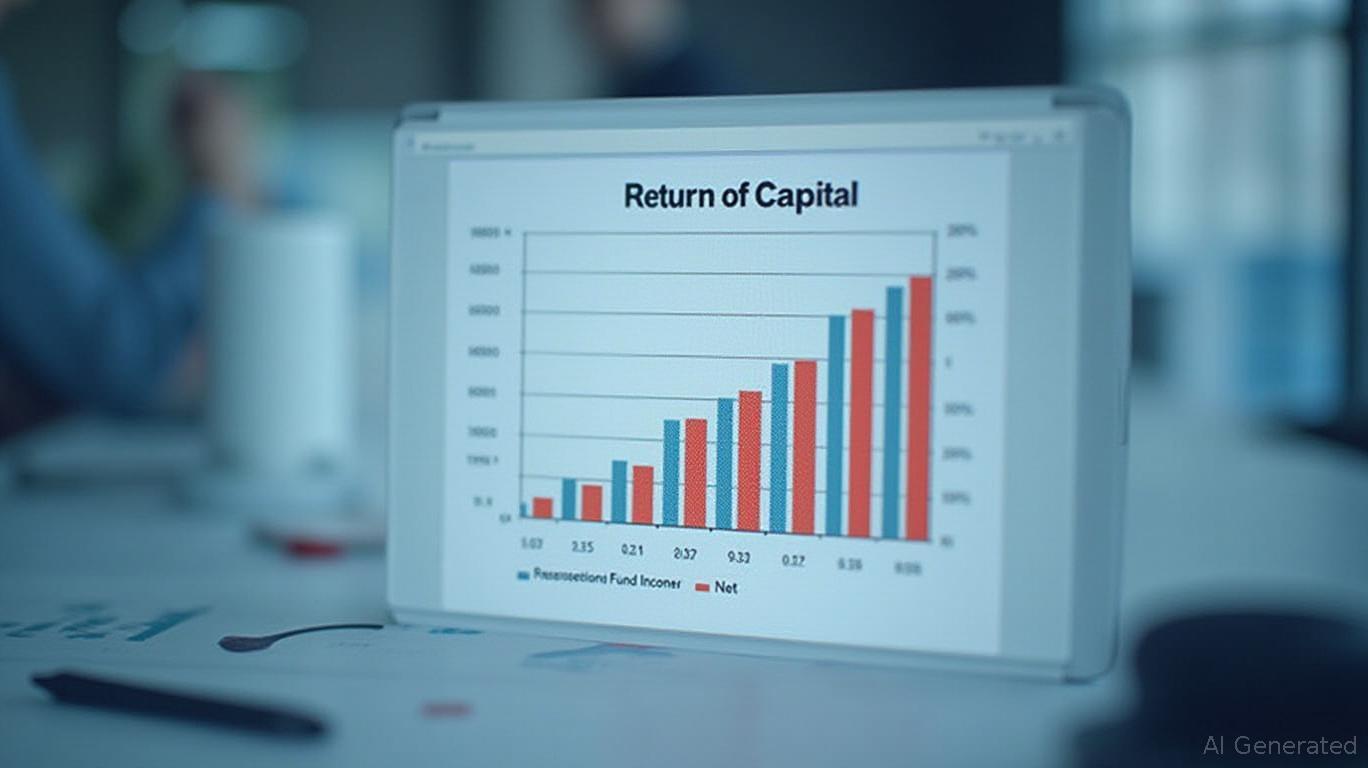John Hancock Premium Dividend Fund: A Warning Signal in the Fixed Distribution Mirage

Investors in closed-end funds like the John Hancock Premium Dividend Fund (NYSE: PDT) often prioritize steady income over short-term volatility. Yet beneath PDT's fixed monthly distribution of $0.0825 per share lies a troubling trend: a growing reliance on returning investor capital to sustain payouts. This shift raises red flags about principal erosion, misaligned incentives, and the fragility of a “managed” dividend in the face of stagnant income generation.
The Growing Reliance on Return of Capital
PDT's distribution structure, designed to deliver predictable income, has become a double-edged sword. According to SEC filings, the April 2025 distribution sourced 40% of its payout from Return of Capital (ROC)—a dramatic increase from February's 20% and a stark contrast to December 2024, when ROC was nonexistent. Cumulatively, through April, ROC accounted for just 6% of year-to-date distributions, but its prominence in recent months signals a dangerous trend.
The fund's Net Investment Income (NII), derived from dividends and interest, has simultaneously weakened. In April, NII contributed only 33% of the distribution, down from 84% in March and 66% in February. This decline suggests PDT's portfolio is failing to generate sufficient income to cover its fixed payout, forcing managers to dip into shareholder equity to maintain consistency.
The Principal Erosion Risk
ROC distributions are not “income”—they represent a return of the investor's own capital. Over time, this erodes the fund's net asset value (NAV), creating a hidden cost for investors. For instance, if PDT continues to allocate 40% of its distributions to ROC, shareholders could see their principal whittled away even if the fund's NAV remains stable.
Consider the cumulative effect: By April 2025, ROC accounted for $0.0298 per share of year-to-date distributions. If this trend persists through October 2025, the fiscal year's total ROC could exceed $0.07 per share—a direct reduction in equity. For investors seeking capital preservation, this is a critical warning sign.
The Disconnect Between Distributions and Performance
PDT's fixed distribution plan obscures underlying performance risks. Despite a 13.9% five-year annualized return through March 2025, the fund's NAV-based distribution rate of 7.17% exceeds its trailing twelve-month NII yield. This mismatch suggests PDT is leveraging capital returns to prop up payouts, a strategy unsustainable if asset values decline or income generation falters.
Meanwhile, the fund's fiscal-year-to-date total return of 4.89% (as of March 2025) lags behind its distribution rate, hinting at a widening gap between income paid out and growth retained. This dynamic could accelerate NAV erosion, particularly in volatile markets.
Tax Implications and Hidden Costs
Investors often overlook the tax consequences of ROC. While distributions are taxed as income, ROC portions reduce the investor's cost basis, potentially triggering capital gains taxes later. For example, if a $0.0825 distribution includes $0.0334 of ROC, the shareholder's adjusted basis decreases, amplifying future tax liabilities. This complicates long-term planning and underscores the non-income nature of these payouts.
A Call to Reassess
PDT's managed distribution plan offers psychological comfort but masks material risks. Investors should ask:
1. Can PDT's portfolio sustain ROC-heavy distributions long-term?
2. What happens if asset sales dry up or NAV declines?
3. Are there better alternatives with stable NII or lower capital return reliance?
For income-focused investors, funds like the Vanguard Dividend Appreciation ETF (VDA) or iShares Select Dividend ETF (DVY) offer higher NII consistency and transparent dividend policies. PDT's ROC-heavy strategy may appeal to income seekers, but it now demands a rigorous reassessment of risk versus reward.
Final Verdict: Proceed with Caution
John Hancock PDT's allure lies in its predictability, but its reliance on capital returns signals a fund stretched to meet its obligations. With NII dwindling and ROC surging, the risk of principal erosion is real. Investors should prioritize funds that generate income organically or explore high-quality dividend stocks with stronger fundamentals. In a world of managed illusions, PDT's “fixed” dividend may be the first crack in its facade.
The writing is on the wall: PDT's distribution model is under strain. For now, the party continues, but investors ignoring the ROC red flags may soon pay the price.
Data as of April 2025. Past performance does not guarantee future results. Consult a financial advisor before making investment decisions.

Comments
No comments yet